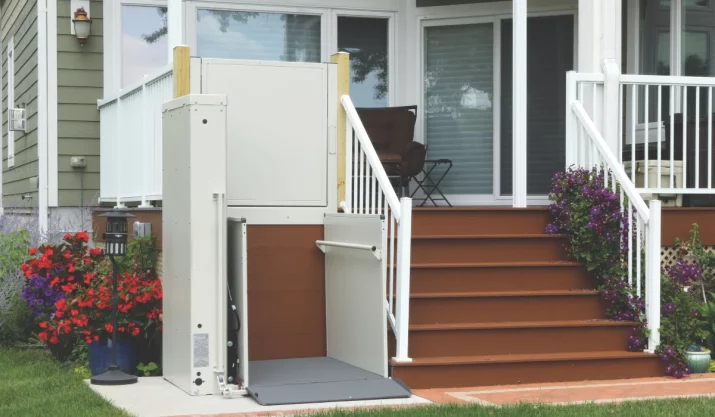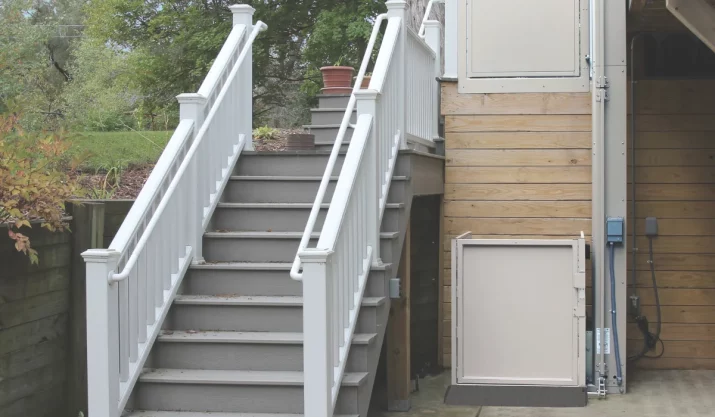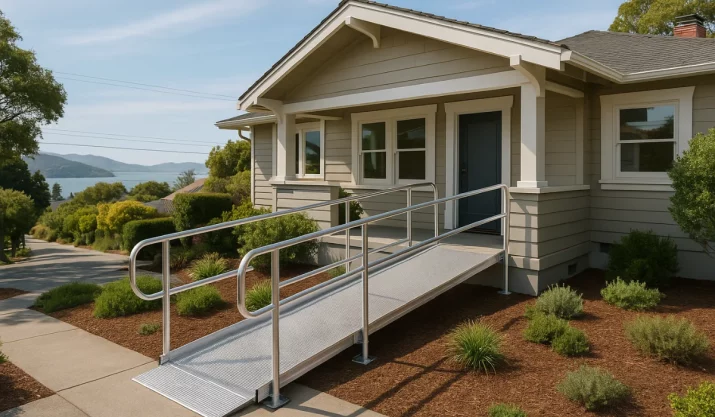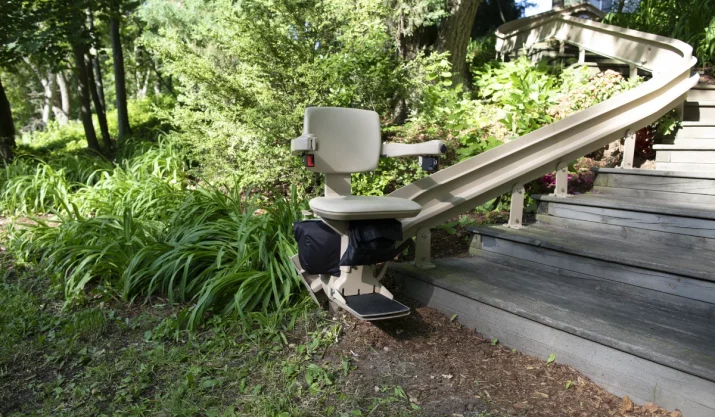Understanding Vertical Platform Lift Regulations and Safety Standards in California

Table of Contents
If you or a loved one has limited mobility, adding a vertical platform lift to your home or business in California can be a life-changing accessibility solution. But like any major installation, there are important regulations and safety standards you’ll need to understand before moving forward.
In this article, we’ll cover California-specific vertical platform lift requirements, explain how they differ between residential and commercial settings, and highlight key safety features to look for.
Key Takeaways
- Vertical platform lifts in California must meet ASME and building code rules for safe use in any location.
- Permits and ADA compliance are required for all public lifts and many residential projects across the state.
- Key safety features include emergency stop buttons, backup batteries, sensors, gates, proper platform size, and weather protection.
- California Mobility provides trusted brands, handles permitting, and installs lifts that meet your needs and local safety standards.
Vertical Platform Lift Regulations in California
If you’re thinking about adding a vertical platform lift (VPL) to your home or business in California, you’ll need to make sure it follows the right safety and accessibility standards.
Here’s what you’ll need to know:
ASME A18.1 Compliance
In California, all VPLs must comply with the ASME A18.1 Safety Standard for Platform Lifts and Stairway Chairlifts. This standard outlines performance, safety, and installation requirements. It ensures each lift meets specific criteria for lifting capacity, landing gate functionality, emergency stop mechanisms, and more.
If you’re working with a certified dealer like California Mobility, this compliance is built into every step of your project, from lift installation to final inspection.
California Building Code (CBC)
The California Building Code (CBC) adds another layer of scrutiny.
Under CBC Chapter 11B (for public buildings) and Chapter 11A (for housing), lifts must be installed to meet exact dimensional, control, and entryway clearance requirements.
For example, public lifts must have controls within reach of a seated user and clear platform sizes to accommodate wheelchairs and scooters.
If you’re in Los Angeles, San Francisco, or anywhere else in California, your VPL must meet these local code adjustments.
To help clarify how requirements differ depending on where the lift is installed, here’s a quick comparison of residential vs. commercial vertical platform lift standards in California:
| Feature | Residential (CBC 11A) | Commercial/Public (CBC 11B + ADA) |
|---|---|---|
| Code Reference | CBC Chapter 11A | CBC Chapter 11B + ADA Standards |
| Permit Required | Yes (if structural/electrical) | Yes (plan review + inspection) |
| Platform Size | Min. 30″ x 48″ (varies by lift) | Must accommodate wheelchairs/scooters |
| Controls | Flexible | Must be reachable from a seated user |
| Gate Interlocks | Recommended | Mandatory |
| ADA Compliance | Not required (private home) | Required |
Permitting and Inspections
Unlike some states where a simple lift installation might be informal, California requires proper permitting, especially for VPLs in commercial settings.
You’ll need to work with local authorities for plan approvals and safety inspections, often involving both building and elevator inspectors.
For residential projects, permits are usually required for electrical and structural modifications, especially if the lift operates in a hoistway or shaftway.
ADA Accessibility Standards
If your VPL is going into a public space, think schools, libraries, or medical offices, it must comply with the Americans with Disabilities Act (ADA). ADA guidelines specify details like platform size, speed, handrails, and barrier-free entry and exit.
California enforces these standards closely, so meeting ADA specs is not optional, it’s mandatory for any publicly accessible lift.
Safety Features to Look for in a Vertical Platform Lift
Choosing the right VPL isn’t just about appearance or cost. It’s about safety, usability, and reliability. The best lifts incorporate these safety features:
Emergency Stop Button
A non-negotiable safety feature in every VPL is a clearly labeled emergency stop button. In the event of any malfunction or if the user feels unsafe during operation, pressing this button immediately halts the lift.
California requires this to be easily reachable, especially for users with limited upper body mobility.
Battery Backup for Power Outages
California’s wildfire risk and grid instability make battery-powered VPLs essential.
Many lifts come equipped with backup systems to continue functioning during a power outage, ensuring users won’t get stranded between levels. This is especially critical in areas like the Central Valley or Northern California, where outages are more frequent.
Landing Gate and Platform Safety Sensors
A landing gate prevents falls when the platform is not present. California codes mandate that landing gates be interlocked, meaning they won’t open unless the platform is level and safe for entry.
Meanwhile, platform safety sensors can detect obstructions and stop the lift, a must-have in homes with pets or small children.
Weather-Resistant Models for Outdoor Use
For porch lifts and other outdoor VPLs, choosing a weather-resistant model is key.
Exposure to salt air near the coast, high heat in Southern California, or foggy, damp conditions in the Bay Area can degrade components. Look for VPLs with sealed controls, UV-resistant finishes, and corrosion-resistant platforms.
Appropriate Platform Sizes and Weight Capacity
Whether you’re using a wheelchair, scooter, or walker, the platform size must allow enough clearance for safe entry and turning.
California requires minimum dimensions for platforms depending on usage type, residential or commercial, and also mandates that lifts meet proper weight capacity ratings (often between 500 and 750 pounds) based on the expected usage.
Hoistway or Shaftway Enclosures
In California, a hoistway or shaftway is required for many indoor vertical wheelchair lifts, especially when they’re installed between multiple floors.
These enclosures protect users and bystanders, and they’re often necessary for code compliance in larger residential homes and commercial buildings.
Ready to Install a Lift That’s Safe and Code-Compliant?
At California Mobility, we specialize in residential vertical platform lifts tailored to your environment. Our team walks you through every step: from code-compliant design and permit handling to professional installation and warranty support.
We carry trusted brands like Bruno vertical platform lifts, and we always focus on what matters most: your safety and mobility.
Want to make your entryway or multi-level building more accessible without the hassle?If you’d like more information or a free quote, our California-based team is here to help.








